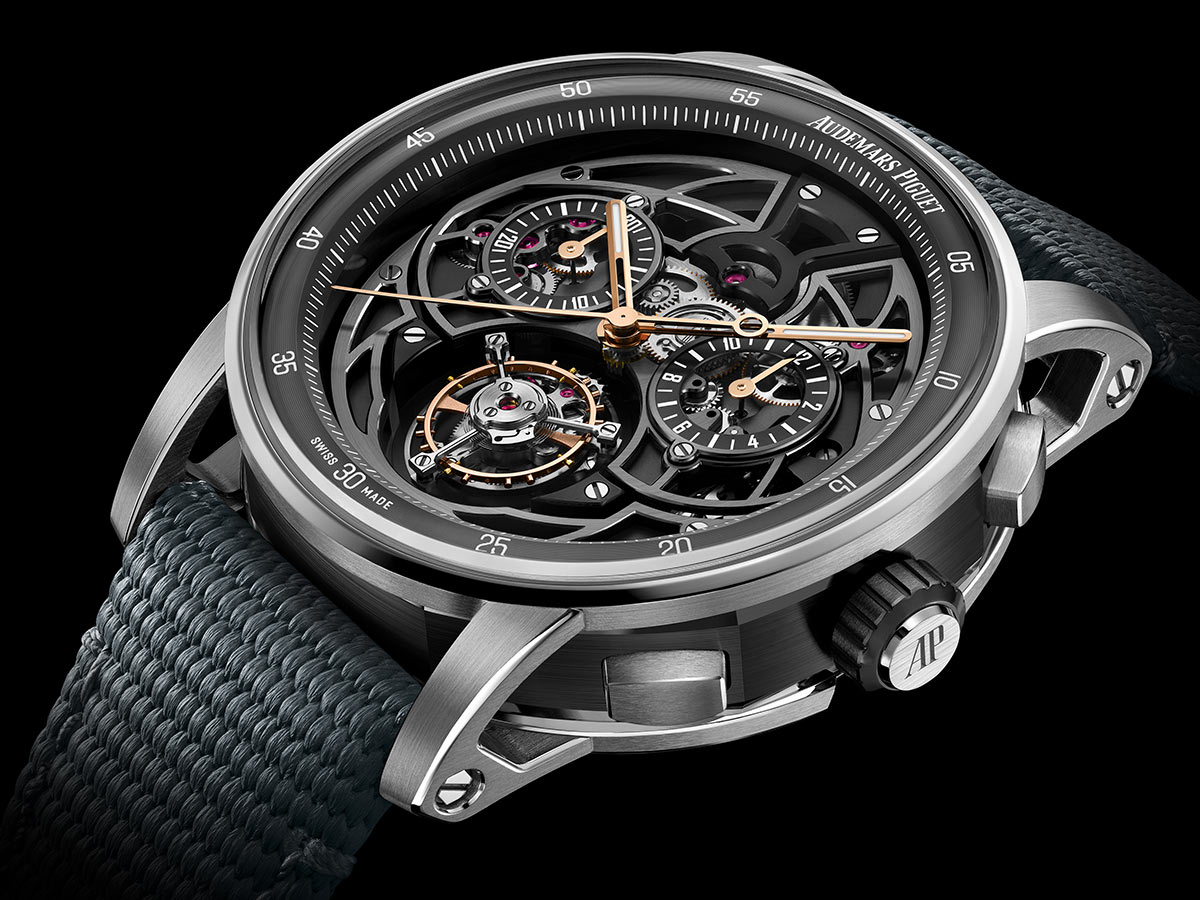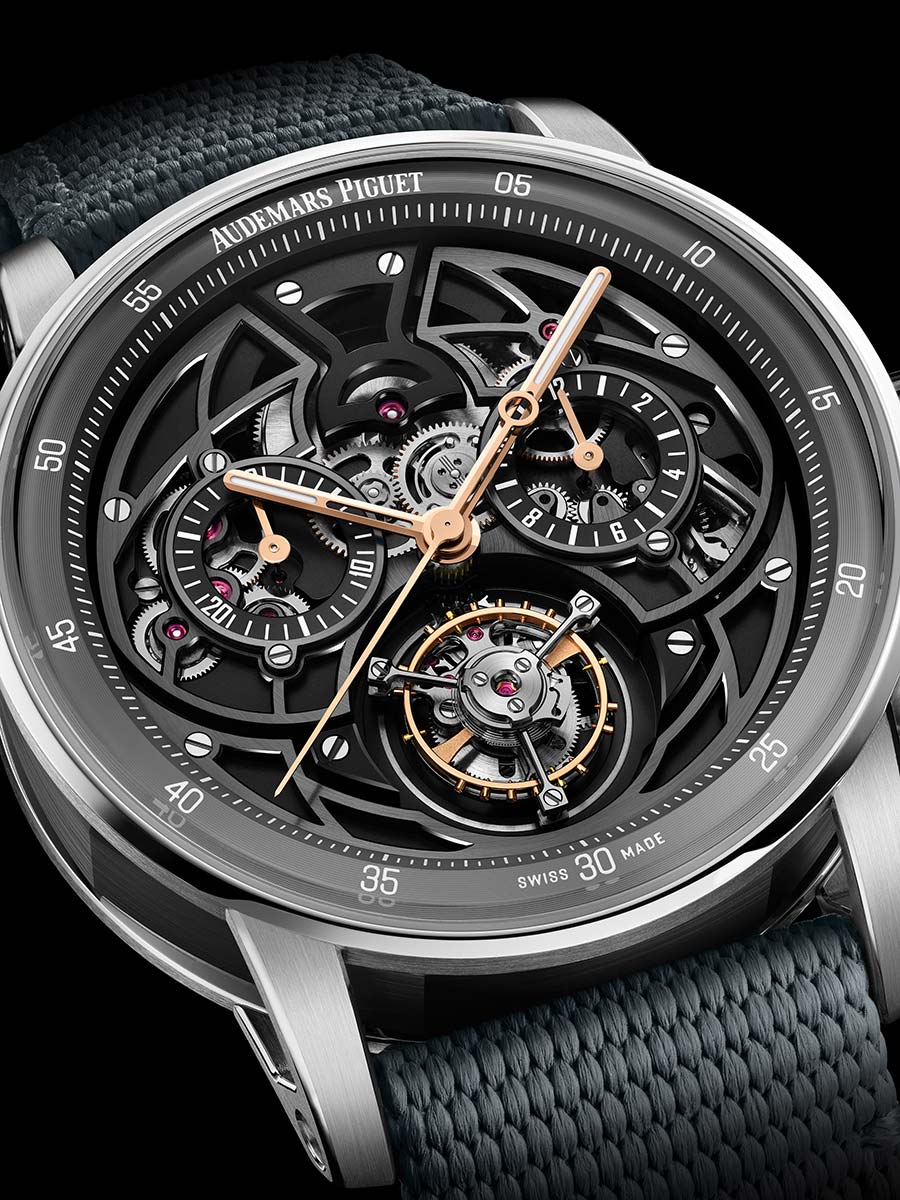Swiss luxury watch manufacturer Audemars Piguet has introduced a new iteration of the Code 11.59 by Audemars Piguet Selfwinding Flying Tourbillon Chronograph in 41 mm.
On the dial side, the watch’s contemporary aesthetic showcases the architectural construction of the Calibre 2952, whose components, in various shades of grey and black, create subtle contrasts. This choice of colours is echoed in the two-tone case, which combines 18-carat white gold and black ceramic.
A Subtle Blend of Greys
The structured lines of this complex timepiece reveal a richly detailed mechanism in shades ranging from light grey to black. This complicated movement is framed by a slate grey, semi-matt inner-bezel finished with circular snailing, on which the seconds scale is printed in white.
The architectural bridges, rhodium-toned for a silver finish, contrast with the blackened mainplate. The barrel bridge at 12 o’clock is also black, emphasising the visual symmetry between the left and right sides of the dial.
The gears are clearly visible, in particular thanks to the transparency of the 30-minute and 12-hour chronograph counters, respectively positioned at 9 and 3 o’clock.
The time and the chronograph measures, indicated by polished pink gold hands, are readable at a glance. In the same golden tone, the balance wheel highlights the complex mechanism of the flying tourbillon at 6 o’clock.

High-Tech Ceramic Combined With The Brilliance Of Gold
The multiple geometric lines of the Code 11.59 by Audemars Piguet case interweave black ceramic, used for the octagonal case middle and for the crown, with 18-carat white gold for the extra-thin bezel, the stylised lugs and the chronograph push-pieces.
The deep black ceramic chosen for this new model demonstrates the mastery of the manufacturer’s engineers and watchmakers in the use of cutting-edge technologies. The manufacture of components in this technical material is particularly complex, from the creation of its secret formula, based on Zirconium Oxide powder (ZrO2), to the successive stages of production.
The ceramic, in particular, loses about a quarter of its volume during the process, which maximises its resistance to scratches. Furthermore, the sintering process, carried out at a temperature of more than 1000°C, brings out the full intensity of the colour, which is enhanced by the refined finishes that adorn the case components.
Although difficult to execute, the hand-finishing of ceramic is no exception to Audemars Piguet’s high standards. For instance, the brand’s trademark alternation of polished chamfers and satin-brushing demands utmost attention to detail and skill from the teams.
In addition, the calibre features no fewer than 111 inner angles on the bridges and decorative elements, meticulously handcrafted by the manufacturer’s artisans. This alternation of finishes creates reflections throughout the watch, adding nuances to the grey and black tones and creating an aesthetic full of subtle details.

A Fascinating Complexity
First unveiled in 2020 on the blue limited edition of the Code 11.59 by Audemars Piguet Selfwinding Flying Tourbillon Chronograph, the Calibre 2952 has since equipped several variations of this model.
Its mechanism combines resetting and instant restarting of the chronograph, a useful complication for taking successive chronometric measurements. The sapphire crystal caseback reveals the movement’s refined decorations and the dedicated rhodium-toned 22-carat pink gold oscillating weight.
For more information, please visit www.audemarspiguet.com.
























